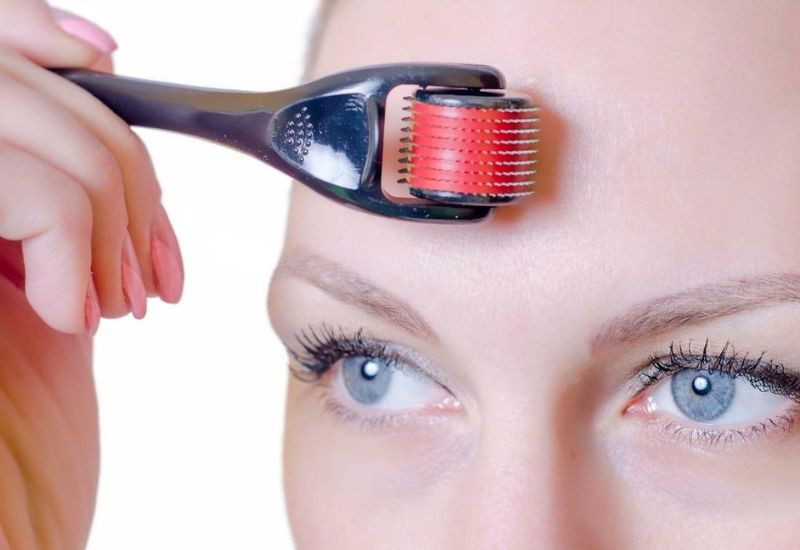Microneedling is a minimally invasive procedure performed on the skin by a dermatologist. This method uses thin needles to create tiny holes in the outermost layer of the skin. The microneedling process can cause minor injuries to the skin, stimulating the body's healing process and promoting increased production of collagen and elastin. These two proteins help the skin become firmer, smoother, and more elastic.
Stem cells are derived from new cells or generated from other types of cells. In the field of aesthetics, two commonly used types of stem cells are autologous stem cells and stem cell products derived from animals. When applied to the skin, these stem cells activate the process of cell proliferation, skin regeneration, and promote faster healing of wounds.
Advantages of Using Stem Cells in Microneedling:
According to dermatologists, microneedling is a beauty method with a relatively low complication rate. This technique is suitable for various skin types and can even be used on areas of skin that are not suitable for chemical treatments, such as oily skin. Microneedling is effective for addressing skin issues like acne, scarring, and pigmentation problems.
After undergoing this treatment, the skin may appear red for about 2 to 3 days and may feel slightly itchy. A tingling sensation may also occur, but this feeling typically lasts for about 12 to 48 hours and will subside. Therefore, there is no need to worry excessively about these signs.
Microneedling with stem cells significantly improves nutrient absorption compared to traditional microneedling methods. Moreover, the stem cell microneedling treatment effectively regenerates the structure of damaged collagen fibers and has a safe wound healing mechanism. This is one of the prominent advantages of this process.

Disadvantages of Using Stem Cell Microneedling:
Although stem cell microneedling offers many benefits for the skin, it does have some limitations. According to several studies, while microneedling with stem cells is suitable for all skin types, in reality, it can be challenging or impossible to apply this method to acne-prone skin. The microneedling process may lead to infections, and sensitive skin may struggle to recover.
After undergoing stem cell microneedling, you need to follow a strict skincare and protection regimen. It is crucial to avoid direct sunlight exposure and harmful environmental factors after the treatment. These are significant drawbacks and inconveniences associated with this method.
If the stem cell microneedling procedure is not performed correctly, it can lead to side effects and complications such as infections, improper asepsis, or inadequate disinfection. Additionally, you may experience contact dermatitis from using low-quality or unverified chemicals, which can result in scarring or skin pigmentation disorders.
The stem cell microneedling procedure combines two elements: microneedling and the use of stem cells. The mechanism of this process relies on the damage caused by the microneedles while simultaneously utilizing stem cells to enhance absorption through the skin. This combination significantly increases the skin regeneration effect compared to using each method individually.
-671083b881250.jpeg)
Effects of Stem Cell Microneedling:
The effectiveness of stem cell microneedling largely depends on the treatment goals, such as tightening pores or achieving skin whitening and rejuvenation, resulting in good and safe outcomes. However, for severe or long-standing scars, the results may be slower and potentially less effective compared to other cases. Therefore, it is essential to thoroughly research this method before undergoing stem cell microneedling. It is advisable to visit medical centers for a consultation with a doctor or dermatology expert.
References: mdedge.com, draesthetica.co.uk
11
Useful article?
Useful article?
11
Useful article?